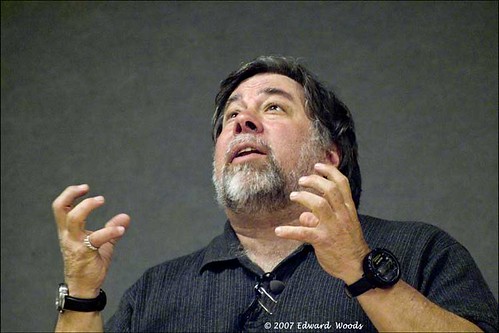Creative Commons is someones utopia. It is a place where people can share and collaborate on creations legally: a community for creative types such as musicians, artists and poets . It is fair to say that Creative Commons is a solution to copyright and authorship laws however it is also a failure as it still does not stop breaches of copyright on the Internet. This essay seeks to explore the organisation, Creative Commons to see how it deals with copyright on the Internet. Notes and examples of successes and failures will be used as evidence to reach the conclusion that overall Creative Commons is inadequate when dealing with the issue of copyright. Firstly, copyright, especially copyright on the Internet is to be explained.
Copyright is, as its name suggests, the right to copy (Liberty (ed.) 1999, pg135). It is all about access and ownership to something (Liberty (ed.) 1999, pg138). According to Baker & McKenzie, Gretchen McCord Hoffman and Liberty, copyright law protects expression, original work and results of creativity from exploitation and acknowledges the creator (1998, pg8; 2005, pg15; 1999, pg135). Copyright also protects work from being tampered with or changed. Copyright laws first appeared in 1534 due to the invention of the printing press in 1476 (McCord Hoffman 2005, pg5). Originally, copyright was not intended to protect created work but to guard government power from mutiny (McCord Hoffman 2005, pg5). Today copyright is the right to a piece of work (Baker & McKenzie 1998, pg8). If something is copied without permission and the “copier” is caught, consequences include infringement, being sued and possible criminal proceedings (Liberty (ed.) 1999, pg135). Liberty deemphasises the importance of copyright, as copying work is “only a problem” if it loses money (Liberty (ed.) 1999, pg138). Negatives to the confines of copyright are also present. Matthew Rimmer objects to copyright for he claims it restricts the flow of ideas (2007, pg 264). Lawrence Lessig also protests that copyright undermines the public domain and the thought of sharing (2001, pg98). But more about Lawrence Lessig later. Copyright on the Internet is the similar to any type of copyright yet in its own right a completely different matter.
The Internet has changed copyright. With new technologies, people are able to copy and distribute material perfectly, easily and cheaply (Liberty (ed.) 1999, pg134). Content can be sent around the world in only a few moments, by the touch of a button (Liberty (ed.) 1999, pg134). The legality of sharing work on the Internet is ambiguous; people either do not know or ignore copyright laws (Bollier, David 2008, pg94; Liberty (ed.) 1999, pg134). What the public seems to fail to understand and acknowledge is that everything on the Internet in under copyright, from emails to websites to servers (Liberty (ed.) 1999, pg137). Australian law clearly states that multimedia “used directly or indirectly in a computer” is protected under copyright (Aplin 2005, pg39). Multimedia, being a combination of text, sound, graphics and/ or moving and still images (Aplin 2005, pg8). Lawrence Lessig states that on the Internet, content has all rights reserved or is in the public domain; there is no middle ground (2001, pg98). Creative commons gives an alternative to copyright, its logo “some rights reserved” explains philosophy and aim to change the rules of copyright (Rimmer 2007, pg261).
Creative Commons is a non-profit organisation founded by Lawrence Lessig in 2001 (Rimmer 2007, pg264; Doctorow 2007). Content on Creative Commons is in the public domain, so people can share and add to creative works legally (Rimmer 2007, pg261). By helping to customise copyright licences, creators are allowed more control in terms of use of their work (Rimmer 2007, pg262; Doctorow 2007). The conditions creators get to choose for their personalised copyright licence include permission to use work commercially, permission to modify work and if so, whether adjustments of the work can be distributed (Doctorow 2007). An alternative to strict copyright laws is what Creative Commons create: a solution. On the creative common sites, the testimonials of the service Creative Commons provide an example of it as a resolution to copyright. But is an alternative enough?
Aplin, Tanya 2005, Copyright Law in the Digital Society: The Challenge of Multimedia, Hart Publishing, Oxford, pg 39
Australian Copyright Council, 2009 homepage, accessed 22nd October 2009,
Baker & McKenzie 1998, Guide to Intellectual Property in the I.T. Industry, (1st Edition) Sweet & Maxwell, London, pg 8
Bollier, David 2008, Viral Spiral: How the Commoners Built a Digital Republic of Their Own, The New Press, New York, pg 94
Creative Commons, 2009, Support CC Testimonials, accessed 15th October 2009. <https://support.creativecommons.org/testimonials>
-Homepage, 2009, accessed 15th October 2009 <http://creativecommons.org/ >
8 Doctorow, Cory 2007, Creative Commons, 8th November 2007, accessed 16th October 2009 <http://www.locusmag.com/Features/2007/11/cory-doctorow-creative-commons.html>
Garlick, Mia 2006, Creative Commons License Enforced in Dutch Court, Creative Commons, 16th March 2006, accessed 17th October 2009 <http://creativecommons.org/weblog/entry/5823>
Lessig, Lawrence 2001, The Future of Ideas: The Fate of the Commons in a Connected World, Random House, New York, pg 98
Liberty, The National Council of Civil Liberties (ed.) 1999, Liberating Cyberspace: Civil Liberties, Human Rights and the Internet, Pluto Press, London, pg 134, 135, 137, 138
McCord Hoffman, Gretchen 2005, Copyright in Cyberspace 2: Question and Answers for Librarians, Neal- Schuman Publishers, New York, pg 15
Movies and Downloads.com 2009, homepage =, accessed 21st October 2009 <http://www.moviesanddownloads.com/ >
Rimmer, Matthew 2007, Digital Copyright and the Consumer Revolution: Hands Off My Ipod, Edward Elgar Publishing Ltd, Cheltenham, United Kingdom, pg 261, 262, 264, 270
Watch Direct 2009, Homepage, accessed 21st October 2009 <http://www.watchdirect.tv/ >
Your Free Music Downloads.com 2009, homepage, accessed 21st October 2009 < http://www.yourfreemusicdownloads.com/index.php >







